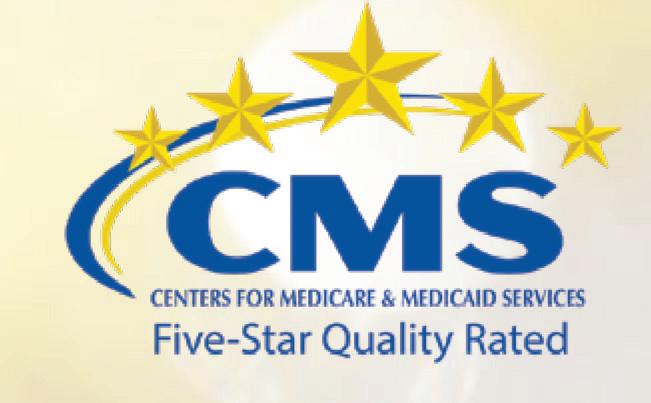• Identity Theft
Social Security Planning for Your Golden Years
• Universal Life Insurance
• Medicare Advantage Enrollment
• Choosing the Right Medicare plan





















• Identity Theft
Social Security Planning for Your Golden Years
• Universal Life Insurance
• Medicare Advantage Enrollment
• Choosing the Right Medicare plan




















(StatePoint) Identity theft is reportedly a growing threat as fraudsters evolve to be savvier and more sophisticated. There have been more than 1,300 data breaches already in 2024, according to the Identity Theft Resource Center.
It’s no surprise an Experian survey found that many consumers are wising up to the risk, with over half the U.S. adult population saying they’re highly concerned about identity theft and fraud.
“As fraudsters continue to become more sophisticated, it’s critical that you take matters into your own hands and protect your personal information,” said Michael Bruemmer, vice president of Experian Global Data Breach Resolution and Consumer Protection at Experian.
To help you avoid becoming a victim of fraud, there are a few key tips you should follow:
Create strong passwords: Create strong passwords for every account you have and don’t repeat passwords. If you reuse the same password across multiple accounts and a criminal gets ahold of it, they can potentially wreak havoc on your personal and financial life. A password manager can help you create unique passwords and store them so you don’t need to remember them all on your own.
Protect personal documents: Keep all your personal documents out of the hands of fraudsters, especially your social security card, as it can quickly open the door to identity theft. Leave your social security card in a safe place at home–don’t carry it with you. Additionally, check your mail every day to prevent theft of potentially sensitive data. Shred paperwork with personal information on it before throwing it away. Also, consider having statements delivered electronically so there are fewer physical documents with your information on them.
Watch out for phishing scams: Phishing uses fake text messages, emails, phone calls or other types of communication that look like it comes from a

the person’s name and where they are calling from. Hang up and call the company back via the phone number listed on its website to verify if the call was legitimate.
Regularly check your credit reports: Regularly checking your credit reports is a good financial and security habit. Staying updated on what is in your reports will help you spot any suspicious activity, like new accounts you don’t recognize, and help you act quickly to combat further fraud.
Leverage tools to combat fraud: Experian data found that only 30% of people are currently using an identity theft protection product or service. This shows that too many people are missing an opportunity to keep themselves and their identity safe. Experian offers free and paid identity protection products that can be an extra layer of protection. Experian IdentityWorks monitors for activity on your Experian credit report and will alert you if there are any changes. It also monitors for your information on the dark web and provides easy access to lock and unlock your Experian credit file.
reputable source. The fraudster’s goal is to make you click on a link or open an attachment and share your personal information. After clicking the fake link and using your login credentials, the scammer can gain access to your account. To protect yourself from these types of scams, never click on a link or open an attachment from someone or a company that you don’t recognize or that looks suspicious. Additionally, if you receive notice that your personal information was involved in a data breach, be cautious about hackers who may imitate the company you received the breach notice from. To verify the legitimacy of the communication, identify the correct phone number by looking at physical statements or by logging into your account through a verified portal and call or email the company separately.
Use caution when answering calls: Criminals may try to call you and pretend that they are with a company you are associated with in order to have you provide your personal information. Never provide information over the phone. Instead, ask for
You can check your Experian credit report for free and enroll in identity theft protection at www.Experian.com. “Identity theft should be taken seriously by everyone. Being proactive and following key steps can help you stay ahead of fraud before it occurs,” says Bruemmer.


On the other hand, if finances are tight and your policy has accumulated a high enough cash value, you can reduce or even skip premium payments without the threat of terminating your coverage.
are typically tax-free for named beneficiaries.
What are some universal life insurance considerations?
(StatePoint) Life is full of changes, transitions, growth—and sometimes disruptions. It’s always the right perfect time to consider a universal life insurance policy that offers flexibility and options catered to your needs.
According to Bankers Life, a national life and health insurance brand, there are six essential questions when considering if a universal life insurance policy is right for you.
What is universal life insurance?
Universal life insurance is a type of permanent life insurance that offers lifelong protection with the unique
flexibility to adjust your coverage and premium amounts. Similar to other forms of permanent life insurance, universal life builds cash value that enables you to accumulate funds on a tax-deferred basis.
One of the major advantages of universal life insurance is the flexibility to adjust your premiums. During times when you have extra money available, you can contribute more than your minimum premium, and the surplus will be added to your cash value and accrue interest over time.
Universal life insurance builds cash value over time through your deposits and the interest earned on your contributions. Some policies provide a guaranteed minimum interest rate, such as 3%, while others might offer a smaller minimum interest rate, such as 1%, but include the potential for higher growth linked to the S&P 500. Based on your specific policy, you can access your cash value through loans or withdrawals to help support your financial goals. It’s crucial to understand that with certain universal life insurance policies, the cash value isn’t passed along with your death benefit; you must withdraw the money while you’re alive.
Depending on insurer and product, universal life insurance can offer unique death benefit options. Some policies give you the option to decrease your death benefit if you require less coverage in the future. Other insurers offer the option to increase your death benefit as your needs evolve. In either case, death benefits
Of all the life insurance products available, universal life insurance offers you the most control. However, this flexibility requires some degree of policy management on your part. If you choose to skip or lower your premium payments, you must ensure that your policy has enough cash value. Otherwise, your coverage could lapse if it isn’t adequately funded.
If you’re interested in permanent life insurance that features consistent premiums, a stable death benefit, and access to cash value, then a whole life insurance policy may be a better fit for you.
Is universal life insurance right for you?
If you’re unsure what type of life insurance policy is best for your needs and budget, an agent can walk you through your options and help you build a strategy that helps protect your financial security and peace of mind. For more information, reach out to a Bankers Life agent or visit bankerslife.com.
Evaluating these six key questions is the first step in determining if a universal life insurance policy aligns with your financial goals and will ensure that you’re making an informed decision that protects your future.

















By Kris B. Mamula Pittsburgh Post-Gazette
(TNS) It’s a simple thing, but often overlooked: Medicare Advantage plans are government Medicare benefits provided through for-profit insurers, so plan terms can — and do — change every year.
If seniors don’t like the changes or if their plans suddenly cost too much, they can switch starting next week, although 69% of beneficiaries don’t shop around, according to a survey by KFF, a San Francisco-based health care nonprofit.
Open enrollment for Medicare Advantage plans runs from Oct. 15 to Dec. 7 and some of the biggest changes that eligible residents may see in the 2025 offerings are the cost of their prescriptions — even as the total outof-pocket expenditures for drugs will be capped at $2,000 for the year.
spread across monthly payments throughout the year in 2025.
Aetna CVS Health and Highmark — two of Western Pennsylvania’s three biggest Medicare Advantage insurers — will require members to pay a percentage for some prescriptions in 2025 rather than a flat copay, which will be a pain in the wallet for some, depending on the medications you take.
Health insurers recently received additional subsidies of $5 billion from the federal government to help underwrite Medicare Advantage coverage for 32.8 million seniors. That will keep monthly premiums stable next year.
But many consumers will be in for a surprise at the pharmacy counter come January.
“A significant number of seniors will see increases in drug costs, some at $1,000 or more,” said Aaron Zolbrod, owner of the Health Insurance Store in Forest Hills. “You better shop.”

























Better still, drug costs can be







In Pennsylvania alone, some 76,000 seniors are expected to benefit from the new prescription drug cap, according to a KFF study based on 2021 pharmacy expenditures. The limit replaces a requirement that Part D enrollees pay 5% of their drug costs out of pocket after their drug expenditures reach a certain threshold.






Comparing Medicare Advantage plans against the coverage you have is the only way to know whether you’re paying too much, insurance brokers say.



























Average premiums, benefits and plan choices for Medicare Advantage and Medicare Part D prescription drug plans are expected to remain stable in

2025 and there are lots of choices — 68 plans being offered to Allegheny County residents alone.
The average monthly premium next year will be $24.55, with many insurers offering a $0 premium.



MC’s Medicare Advantage coverage for all Tier 3 prescriptions remains a flat copay next year — the same amount as this year. Tiers 3, 4, and 5 have an annual deductible for 2025, which is $175 or $350, depending on plan.












Health insurers have long charged members a percentage of prescription costs for very expensive drugs, but next year the region’s three biggest Medicare Advantage plans will charge a percentage — instead of a flat copay — for the most commonly prescribed drugs. These medications include Eliquis, a blood thinner and the thirdmost commonly prescribed drug in the U.S., according to a 2023 ranking.
There are exceptions: UP-
Included in UPMC’s Tier 3 prescriptions is the new family of diabetes medications that includes Ozempic, which retails for about $900, and Trulicity, which retails for about $1,300, both for a 30-day supply. Here’s what that could mean when shopping for a Medicare Advantage plan. A percentage copay for so-called GLP drugs, like Ozempic, rather than
a flat copay could increase the cost of a prescription for consumers to $120 from $47, a 155% increase.
“It’s really about affordability and access,” said Angela Perri, chief Medicare officer at UPMC Health Plan. “We did everything we could to keep medications available, which was definitely a challenge this year.”
Cigna Healthcare’s Preferred Medicare HMO also offers a flat copay up to $100 for Tier 3 prescription medications, along with an unheard of low maximum out-of-pocket expenditure for medical costs of $2,200 for Western Pennsylvania members — $2,000 for members living in the northwest part of the state.
Cue the trombones: these are the lowest caps for Medicare Advantage plans in Pennsylvania for 2025.
A caveat for Cigna: In September, the insurer reached a $37 million settlement with federal authorities in a lawsuit that alleged the insurer had submitted fraudulent Medicare
Advantage claims by exaggerating member health problems. Payments to insurers are determined by the severity of their medical conditions, so the more health issues a member has, the higher the reimbursement.
Something else to know: Cigna is in the process of selling its Medicare Advantage and related government businesses to Chicago-based Health Care Service Corp., operator of five Blue Cross Blue Shield plans, for $3.7 billion. The deal is expected to close in the first quarter of 2025.
In another Western Pennsylvania twist for 2025, CVS Health’s Aetna subsidiary is bundling care for chronic medical conditions such as diabetes and heart disease — just for members living in Allegheny and surrounding counties — with its new Oak Street Health primary care clinics in Wilkinsburg and the West End.
The Aetna Medicare Advantra Gold plan also comes with a $590 prescription deductible.
“The message from us is really about that stability we bring to the market every year,” said Don Mazza, Aetna’s chief Medicare officer for Pennsylvania.
One note about Aetna’s popular Advantra Silver plan: In 2025, the patient copay for a hospital stay will rise to $260 for seven days for the $0 premium plan, which compares to $145 for four days this year — a total of $1,820 out of pocket next year compared to $580 this year, or more than double the cost for members who are hospitalized.
And a footnote about Oak Street Health: The CVS Aetna Health subsidiary in September agreed to pay $60 million to the government to resolve allegations that the Chicago-based company paid kickbacks to insurance agents in exchange for recruiting seniors to Oak Street’s primary care clinics. The federal Anti-Kickback Statute prohibits anyone from paying or otherwise inducing referrals of
Medicare program beneficiaries. Stability in Medicare Advantage plan terms is also the byword at Highmark in its 2025 offerings, said Bill Tuthill, vice president of market strategy, ACA & Medicare. Members will see a new provider for wellness benefits, but not much change in monthly premiums as Highmark drops Franklin, Tenn.-based Tivity Health’s SilverSneakers program in 2025 for FitOn Health, which is based in Orlando, Fla.
The new partner will add some new fitness options for members, Mr. Tuthill said.
“Substantially all of our plans will have premiums staying the same or going down,” he said, but the switch in prescription co-pays next year “may have a pretty big impact on some members.”
The federal government link to compare Medicare Advantage plans is https://tinyurl.com/4cx78j5b.





































(StatePoint) With so many Medicare options available, selecting a plan can seem daunting. This year you may be wondering how news of Medicare drug price negotiations, economic uncertainties and other factors may impact your coverage in 2025.
Medicare is the government health insurance program for Americans 65 and older and others who qualify, providing hospital coverage (Part A) and physician visits (Part B) to beneficiaries. Additionally, there are a variety of options that coordinate with original Medicare, such as Medicare Supplement plans and Prescription Drug Plans, or replace original Medicare with Medicare Advantage (MA) plans combined with Prescription Drug Plans.
During this year’s Medicare Annual Enrollment Period (AEP), which takes place between Oct. 15-Dec. 7, 2024, here’s what Cigna Healthcare, which serves millions of Medicare customers nationwide, wants you to know:
1. Check for plan changes: If your current plan is working for you, you can likely keep it. However, it’s a good idea to review your plan every AEP, especially if you’ve experienced major life, health or financial changes. Any changes to your current plan will be outlined in your Medicare plan’s Annual Notice of Change (ANOC) letter, which you can expect to receive in September.
2. Research your coverage: There are a few key things to watch for when shopping for a plan. One of them is whether your favorite providers and specialists will be in-network. You should also review each plan’s formulary –that is, the list of drugs covered under the plan. You’ll want to

find a plan that will cover your current medications and any you anticipate your doctor prescribing over the course of the year ahead. Finally, carefully consider your total spend for your prescription drug plan coverage (i.e., premiums plus pharmacy costs) since the maximum out-of-pocket costs for drugs you utilize will be capped at $2,000 in 2025.
3. Look for value: No matter what the economic outlook is, it’s wise to select a plan that provides great value. To that end, you may want to consider an MA plan, which offers quality and affordability. MA plans cover every-
thing original Medicare does, plus more; most also include dental, vision and hearing benefits, prescription drug coverage, and other extras like over-thecounter drugs, transportation to doctor’s visits and pharmacies, healthy grocery purchases, and fitness services. MA plans are often available with $0 premiums, but you’ll also want to check on what your annual out-of-pocket costs could be based on your health status.
4. Understand your plan: Before enrolling in a particular plan, make sure you understand its ins and outs. Call Medicare at
1-800-MEDICARE (1-800-6334227) 24/7; TTY users can call 1-877-486-2048. Or, visit the Medicare Plan Finder website at Medicare.gov/plan-compare. For local assistance, refer to the State Health Insurance Assistance Program at www.shiptacenter.org. You can also contact individual Medicare plans, including Cigna Healthcare at CignaMedicareInformation.com.
“AEP is your opportunity to assess your budget and your health needs and find an option that will work for you and your lifestyle in 2025,” says Ryan Kocher, chief growth officer for Cigna Healthcare Medicare.

Social Security benefits and Supplemental Security Income (SSI) payments for more than 72.5 million Americans will increase 2.5% in 2025, the Social Security Administration announced.
On average, Social Security retirement benefits will increase by about $50 per month starting in January.
Over the last decade the COLA increase has averaged about 2.6%. The COLA was 3.2% in 2024.
Nearly 68 million Social Security beneficiaries will see a 2.5% cost-ofliving adjustment (COLA) beginning in January 2025. Increased payments to nearly 7.5 million people receiving SSI will begin on Dec. 31. (Note: Some people receive both Social Security benefits and SSI).
“Social Security benefits and SSI payments will increase in 2025, helping tens of millions of people keep up with expenses even as inflation has started to cool,” said Martin O’Malley, commissioner of Social Security.
Some other adjustments that take effect in January of each year are based on the increase in average wages. Based on that increase, the maximum amount of earnings subject to the Social Security tax (taxable maximum) is slated to increase to $176,100 from $168,600.












Social Security begins notifying people about their new benefit amount by mail starting in early December.
This year, for the first time, Social Security beneficiaries will receive a newly designed and improved COLA notice that makes it easier for customers to find the information they need most. The simplified COLA notice is now only one page, uses plain and personalized language, and provides exact dates and dollar amounts of a person’s new benefit amount and any deductions.
Individuals who have a personal my Social Security account can view their COLA notice online, which is secure, easy, and faster than receiving a letter in the mail. People can set up text or email alerts when there is a new message — such as their COLA notice — waiting for them in my Social Security.
People will need to have a personal my Social Security account by Nov. 20 to see their COLA notice online. To get started, visit www.ssa.gov/myaccount.
Information about Medicare changes for 2025 will be available at www. medicare.gov. For Social Security beneficiaries enrolled in Medicare, the 2025 benefit amount will be available via my Social Security’s Message Center starting in late November. Those who have not opted to receive messages online will receive their COLA notice by mail in December.
The Social Security Act provides for how the COLA is calculated. The Social Security Act ties the annual COLA to the increase in the Consumer Price Index as determined by the Department of Labor’s Bureau of Labor Statistics.
To read more, please visit www.ssa. gov/cola.












Phone: (716) 373-5500 • Fax: (716) 373-5545 Home: (716) 373-0515


















































By Russell Gloor
My wife retired in 2015 and is receiving Social Security. I am past my full retirement age, and I still work. I recently filed for Social Security benefits and received my first payment earlier this month, and my benefits are around three times my wife’s. I now find that, due to other income, I am having some regrets about filing for Social Security, as the taxes will be complicated. So, my questions are:
1. If I do a “Voluntary Suspension”, can my wife still apply to get up to 50% of my benefits, or do I have to be “actively” receiving Social Security benefits? In other words, does the “Bipartisan Budget Act of 2015” prevent this?
2. If I do a “Voluntary Suspension”, how soon could I “restart” my benefits? — Having Second Thoughts
The Bipartisan Budget Act of 2015 closed a loophole which previously allowed someone to file for their Social Security retirement benefit in order for their marital partner to claim a spousal benefit, after which the primary beneficiary could suspend their own benefit and allow it to grow to maximum at age 70. That “file and suspend” option went away in April of 2016; thus, your
wife cannot claim her spousal benefit while your Social Security retirement benefits are suspended (you must be “actively” receiving benefits for your wife to get benefits on your record). Nevertheless, because you’ve already reached your full retirement age, you can voluntarily suspend your benefit payments at any time to allow it to continue growing by simply calling Social Security at your local office or (800) 772-1213 and asking them to do so. Your wife will not receive her spousal benefits for any months your benefits are suspended, but she would continue to get her own SS retirement amount (only the spousal portion of her monthly amount would be suspended). You will be able to restart your benefits at any time by calling Social Security again and asking that your benefits be resumed. You can suspend and restart your benefits as needed (no restriction on how many times), but they will only start/resume the suspension effective with the month following the month you call. And, as you likely already know, for each month your benefits are suspended you will earn Delayed Retirement Credits (DRCs) resulting in a higher payment amount later.
Just for clarity, voluntary suspension of benefits is only available to those who have reached full retirement age but is an excellent way to increase your monthly Social Security payment. Your benefit will grow by .667% for each month suspended and, if your benefit is still suspended when you turn 70 years old, Social Security will automatically resume payments at that time, at your higher maximum monthly amount.
• • • • •
DEAR RUSTY: I am 80 years old, and I receive monthly Social Security benefits, but I’m thinking about returning to work. At this age, am I limited in
how much income I generate without affecting my benefit? If so, how much can I earn without affecting it? — Spry Octogenarian.
DEAR SPRY: Since you have already reached your full retirement age (FRA) for Social Security’s purposes, you can earn as much income from working as you like without your monthly Social Security payment being affected.
Social Security’s earnings test applies only to those who collect benefits before reaching their full retirement age, which is somewhere between age 66 and 67, depending on year of birth.
However, although the earnings test will not apply to you, it’s important to know that Social Security benefits are subject to income tax if your annual combined income from all sources (also known as your “Modified Adjusted Gross Income” or “MAGI”) exceeds certain thresholds. Your income tax filing status is an influencing factor — if you file as a single and your MAGI is more than $25,000, or if you file as “married/ jointly” and your MAGI is more than $32,000, then 50% of the SS benefits you received during the tax year becomes part of your overall taxable income.
The video player is currently playing an ad. You can skip the ad in 5 sec with a mouse or keyboard
And if your MAGI as a single filer is more than $34,000 or, as a married filer more than $44,000, then up to 85% of the SS benefits you receive during the tax year becomes part of your overall taxable income at your standard IRS income tax rate. Thus, returning to work may result in Social Security benefits unexpectedly becoming taxable income.
For complete clarity, your “MAGI” is your regular Adjusted Gross Income (AGI) on your income tax return, plus 50% of the Social Security benefits you
received during the tax year, plus any other non-taxable income (except Roth IRA withdrawals) you may have had.
So, while your earnings from working at age 80 (and beyond) will not affect your monthly Social Security benefit payment, you may, depending on your total income or “MAGI,” find that your Social Security benefits will become taxable if your combined income from all sources exceeds the above thresholds.
And if your benefits will become taxable, you may wish to consider having income taxes withheld from your monthly Social Security payments, which you can do by submitting IRS form W-4V to your local Social Security field office.
(Russell Gloor is an Association of Mature American Citizens certified Social Security advisor.)
The Olean Social Security Office serves the Twin Tiers area that includes Cattaraugus and Allegany counties in New York and McKean and Potter counties in Pennsylvania.
The office is located at: 1618 W. State St. Olean, N.Y. 14760
Phone numbers: (877) 319-5773 (716) 376-8932
Toll free - (800) 772-1213
Hours:
Monday-Friday: 9 a.m. to 4 p.m.
Saturday-Sunday: Closed


















































































































































































































































